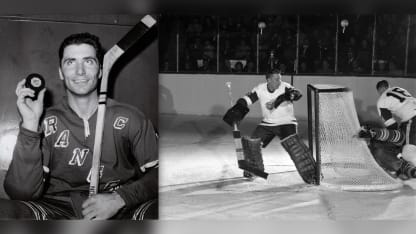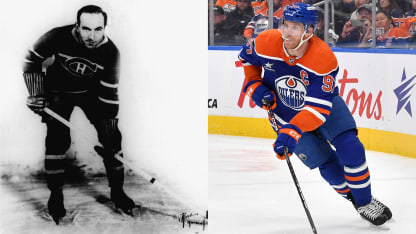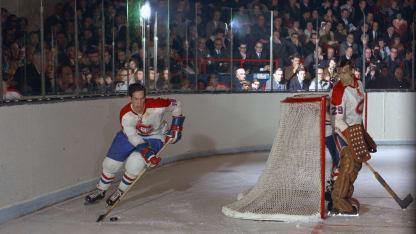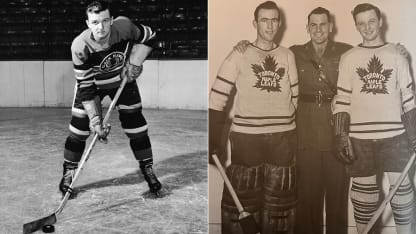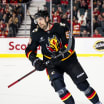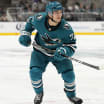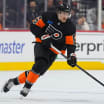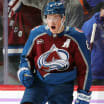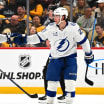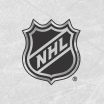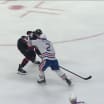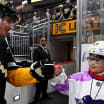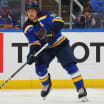Legendary hockey reporter Stan Fischler writes a weekly scrapbook for NHL.com. Fischler, known as "The Hockey Maven," shares his humor and insight with readers each Wednesday. This week celebrates the 90th birthday of when the NHL introduced the use of the penalty shot for the 1934-35 season.
For years hockey professionals pondered the question of how does one produce justice for a shooter when he's fouled on an obvious scoring opportunity?
Before the NHL solved the problem, Pacific Coast Hockey Association leaders, brothers Lester and Frank Patrick, came up with a solution.
Historian-author Eric Whitehead explained in his book, "The Patricks: Hockey's Royal Family," how a trip to the British Isles led to hockey's first penalty shot.
"While we were in London," said Frank Patrick, the PCHA president, "we traveled out to Chiswick to see a polo match. Early in the contest the referee called for a penalty shot, something I had never seen before. The shot produced the winning goal, and I got a terrific kick out of it. So did the other thousands in the stands.
"The way I saw it, if a rule like that could excite this very conservative English crowd, it would go great with hockey fans, so we brought it to the Pacific Coast Hockey Association for the 1921-22 PCHA season."
The first penalty shot was taken Dec. 6, 1921, and the first goal scored by Tom Dunderdale of the Victoria Cougars against Vancouver Millionaires goalie Hugh Lehman on Dec. 12, 1921. According to the Patrick plan, the shot was taken from one of three dots painted on the ice 35 feet from the goal. Players had to skate to the dot and shoot the puck from the dot.
Yet the penalty shot was not adopted by the NHL until it was added to the rule book for the 1934-35 season. The Patrick influence made it possible. Lester had been running the New York Rangers since their inception in 1926. Frank became coach of the Boston Bruins in September of 1934.
Together, they lobbied for the penalty shot.
"Pushed forward by the Patrick Brothers when the NHL introduced the penalty shot for the 1934-35 season, it was thought to be a 'sniper's delight,'" wrote historian Mike Commito in "Hockey 365."
"In the depths of The Great Depression, it was seen as a way to inject some additional excitement into hockey games."
In its original NHL form, when a player was fouled while in "a good scoring position," the puck was placed in a 10-foot circle and 38 feet from the goalmouth. The player could shoot while stationary within the circle or while moving, if the shot was taken within the circle. The goalie had to be stationary until the puck was shot, and no more than a foot in front of the goal mouth.
"While it was marketed as a 'sure goal,'" wrote Commito, "under those regulations goaltenders still had a significant advantage."
The first NHL penalty shot was awarded to Montreal Canadiens forward Armand Mondou against the Toronto Maple Leafs on Nov. 10, 1934. Though forward Georges Mantha was tripped while in scoring position, Mondou was chosen as the designated shooter.
"Mondou shot from a stationary position and the puck never left the ice," Commito wrote. "The disk slid easily into the outstretched glove of (Maple Leafs goalie) George Hainsworth."
Toronto won the game 2-1.
Three nights later, the first NHL goal was scored on a penalty shot. St. Louis Eagles defenseman Ralph "Scotty" Bowman took the shot against Montreal Maroons goalie Alec Connell in the second period. Bowman beat Connell but the Eagles lost 2-1 in overtime.
The NHL altered the penalty shot rules in 1941, adding both minor and major penalty shots. The major call allowed players to skate to the goalie in a one-on-one challenge as presently is the case.
According to Charles L. Coleman's "Trail of The Stanley Cup" -- the unofficial NHL history -- the major penalty shot originally was considered a "novelty." On Nov. 16, 1941, Brooklyn Americans defenseman Pat Egan was tripped by Canadiens defenseman Emile "Butch" Bouchard when he split the Montreal defense.
"Egan scored the winning goal on his penalty shot with two minutes to go," wrote Coleman. "Egan skated only about two yards past the shot line before whipping the puck past the surprised goalie Bert Gardiner."
The first successful penalty shot in Stanley Cup Final history occurred in Game 1 of the 2006 Stanley Cup Final between the Edmonton Oilers and Carolina Hurricanes on June 5, when Carolina defenseman Niclas Wallin illegally covered the puck in the goal crease and Edmonton defenseman Chris Pronger beat goalie Cam Ward at 10:36 of the second period. The Hurricanes won 5-4 at RBC Center and the series in seven games.
